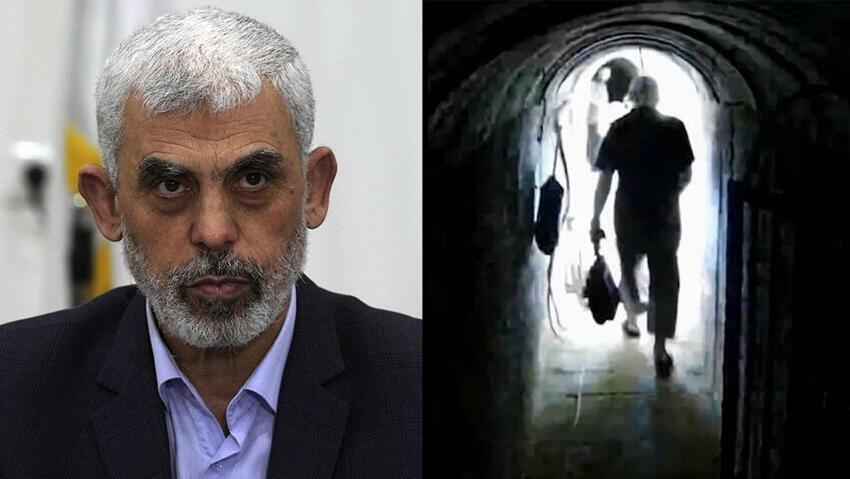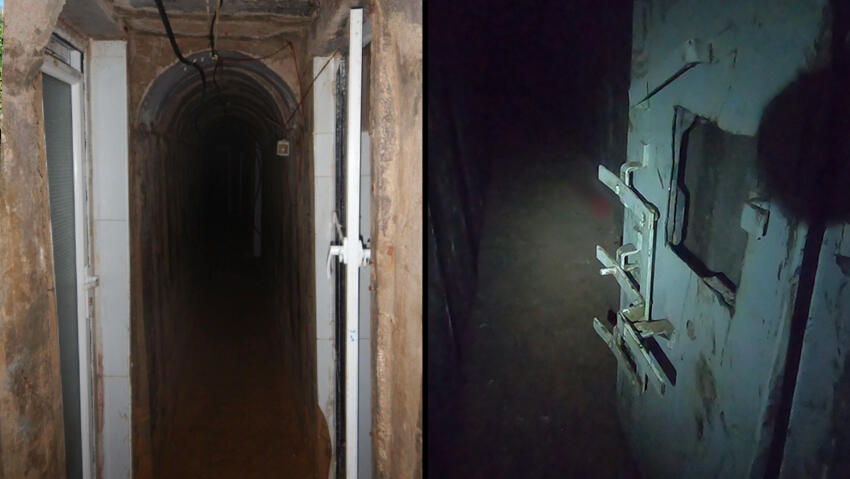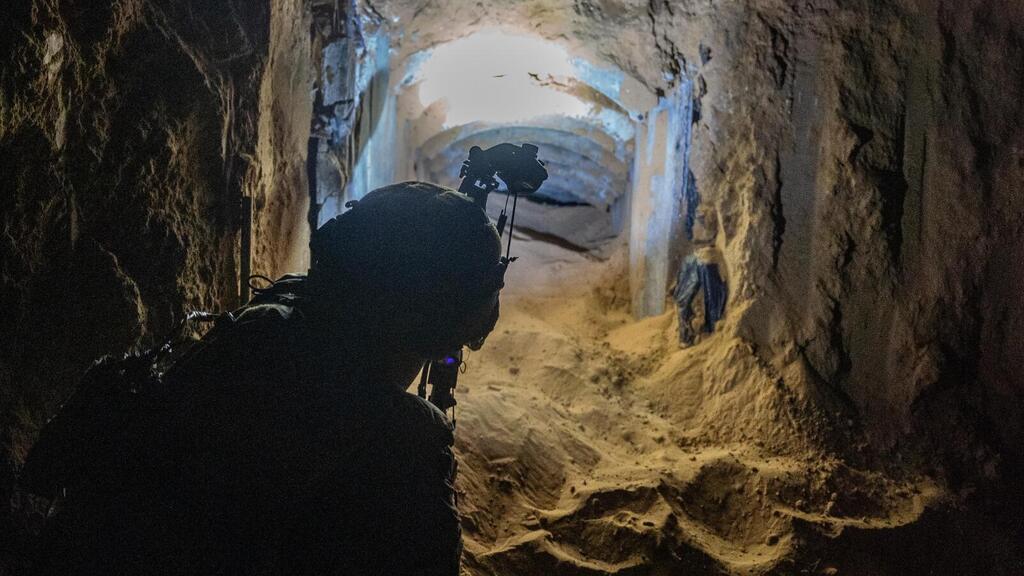Getting your Trinity Audio player ready...
The New York Times on Monday revealed internal Hamas documents that detail the meticulous preparations made by the terrorist organization for a war against the IDF within Gaza's tunnel system. These documents highlight how Hamas has refined its tunnels and combat strategies in anticipation of the underground battles it expected to face.
Among the revelations is a Hamas training manual instructing fighters on how to move through tunnels using night vision equipment and guiding each other by placing hands on the person ahead. Another document, signed by Hamas leader Yahya Sinwar, approves funds for upgrading the most critical tunnels, including the installation of armored doors to make it more difficult for the IDF to breach them.
The New York Times report is based on a series of documents captured by the IDF during the ground operation as well as interviews with experts and security and intelligence officials familiar with the tunnels.
The tunnel warfare manual was reportedly found by Israeli security forces in Gaza City's Zeitoun neighborhood in November, and Sinwar's letter, addressed to senior Hamas leader Mohammed Deif, was intercepted that same month in southern Gaza City. The newspaper notes that the symbols and markings in these documents match those seen in previous Hamas documents reviewed by the Times or made public, and that details mentioned, such as concealed tunnel entrances, armored doors, gas detectors, and night vision equipment, align with findings the IDF encountered in the tunnels.
According to the New York Times, the Hamas tunnel warfare manual was written in 2019 and reflects a years-long effort by Hamas, well before the October 7 terrorist attack, to establish a subterranean military network designed to withstand prolonged assaults and slow the IDF's advance in the event of an Israeli invasion of Gaza.
Footage from Hamas tunnel where hostages were held
(IDF)
The manual provides detailed instructions on how Hamas operatives should conduct underground combat, navigate in darkness, and fire automatic weapons within the tunnels to maximize casualties. Hamas commanders were instructed to measure down to the second how long it takes their fighters to move between specific points in the underground tunnel network.
The manual also includes instructions on how to camouflage tunnel entrances, locate them using compasses or GPS, and move efficiently: "When a fighter moves in the dark inside the tunnel, he needs infrared night vision goggles," the document states in Arabic. The weapon should be set to automatic mode and fired from the shoulder, is effective because the tunnel is narrow, directing the shots to the lethal areas in the upper part of the human body." Hamas fighters are instructed to move through the tunnels with one hand on the wall and the other on the fighter in front.
The report also draws on a letter from Sinwar to Deif concerning the allocation of funds for tunnel construction. In it, Sinwar wrote that "the brigades will receive money according to the level of importance and need." According to the report, just a year before the October 7 terrorist attack, Sinwar approved a $225,000 investment in the installation of explosion-resistant armored doors to protect Hamas tunnels from aerial and ground attacks. It is unclear if additional orders for further funds have yet to be discovered. The budget allocation document indicates that Hamas commanders inspected the tunnels and identified critical areas both underground and on the surface that needed fortification.
According to the Times, the IDF estimates that building a basic tunnel nearly a kilometer long costs Hamas around $300,000. Sinwar's letter provides insight into where Hamas anticipated the fiercest battles would take place, with most of the funds allocated for the construction of armored doors in tunnels in northern Gaza and Khan Yunis—two locations where some of the most intense fighting in the war later occurred. The armored doors, the newspaper explains, not only block the tunnel from the outside but also divide it into separate sections, protecting it from bombings and breaches. They also hinder the IDF's ability to use drones to inspect and map the tunnels.
The Times notes that the heavy reliance on armored doors is a relatively new tactic for Hamas, not used during Operation Protective Edge in 2014. The IDF has repeatedly encountered these doors while neutralizing tunnels in the current campaign. An Israeli officer is quoted in the newspaper saying that sometimes, when soldiers approach tunnels, Hamas detonates the ceiling to cause it to collapse inward and block the entrance. Despite the methods described in the tunnel warfare manual, the IDF rarely encountered Hamas fighters behind the armored doors after they were breached—most of the time, the fighters had fled.
The documents and interviews with experts and Israeli commanders help explain why, nearly a year into the war, Israel is still struggling to dismantle Hamas. A senior Israeli official told the Times that while Israel had invested significant effort over the years in detecting tunnels that penetrated its territory, gathering intelligence on tunnels within Gaza was not a top priority, as a large-scale Israeli invasion of Gaza and such a widespread war scenario were not considered likely. The Times notes that Israel knew Hamas had an extensive tunnel network, estimating its total length at around 400 kilometers, but now, based on discoveries made during the war, it is believed that the network could be twice as long.
The Times report also reveals Hamas's preparations in terms of the electrical and communication infrastructure needed to operate the tunnels. The newspaper notes that Hamas operatives used solar panels installed on the roofs of private homes to supply electricity to the tunnels beneath them and that under the headquarters of the United Nations Relief and Works Agency (UNRWA) in Gaza, the IDF found Nokia communication systems. According to the exposed manual, these Nokia systems provide voice and data services and can function as a switchboard for the underground communication network. However, the report notes that additional equipment is required for their operation, and it is unclear if Hamas possessed it.








